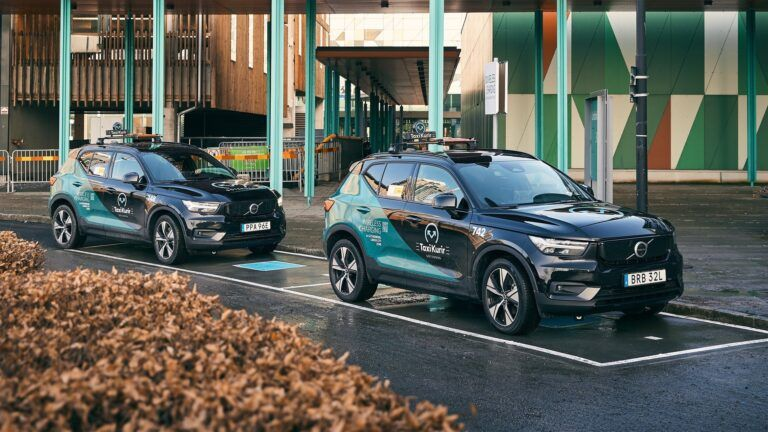In 2023, the electric vehicle (EV) industry is charging ahead with a groundbreaking innovation: wireless EV charging. Imagine a future where your car charges effortlessly as you park, no cables needed. According to a recent Bloomberg Green report, cities like Oslo and New York are already piloting wireless charging projects, with positive feedback from users and urban planners alike. This blog post will delve into how wireless EV charging is transforming urban infrastructure, enhancing convenience, and propelling sustainable living forward.
The Rise of Wireless EV Charging: A Game Changer for Cities
What is Wireless EV Charging and How Does it Work?
Wireless EV charging, also known as inductive charging, allows electric vehicles to charge without physical connectors. This technology employs electromagnetic fields to transfer energy between a charging pad on the ground and a receiver attached to the vehicle. It’s a seamless process that could revolutionize urban mobility. According to TechCrunch, this technology is gaining traction, with advancements allowing for faster and more efficient energy transfer.
Benefits of Wireless Charging for Urban Areas
- Improved Urban Aesthetics: By eliminating the need for bulky charging stations and cables, wireless charging enhances the visual appeal of cityscapes.
-
Increased Convenience: Drivers can charge their vehicles simply by parking over a charging pad, making the process as easy as possible.
-
Enhanced Safety: Without the need for physical connections, there are fewer risks of tripping or electrical faults, making it safer for pedestrians.
-
Efficient Space Utilization: Wireless charging pads can be integrated into existing parking spaces, maximizing the use of urban land.
Cities Leading the Wireless Charging Revolution
-
Oslo, Norway: A pioneer in EV adoption, Oslo launched a pilot program in collaboration with Electrek to test wireless charging for electric taxis. This initiative aims to support the city’s goal of having its entire taxi fleet run on electricity by 2024.
-
New York City, USA: The city is exploring wireless charging for public transportation. A report from Reuters Mobility highlights a pilot program involving electric buses, aiming to reduce emissions and improve urban air quality.
-
Seoul, South Korea: Known for its technological innovation, Seoul has embraced wireless charging for electric buses. By 2025, they plan to equip over 200 buses with this technology, as reported by InsideEVs.
Practical Guide: How to Harness Wireless EV Charging
Where to Find Wireless Charging Stations
-
Public Parking Areas: Many cities are integrating wireless charging pads into public parking lots.
-
Shopping Centers: Some malls and retail centers are adopting this technology to attract eco-conscious shoppers.
-
Residential Complexes: New apartment buildings are being equipped with wireless charging facilities to cater to residents with EVs.
What to Consider When Choosing Wireless Charging
-
Compatibility: Ensure your EV model supports wireless charging. Brands like Tesla and Hyundai are already offering models compatible with this technology.
-
Cost: While initially more expensive, the convenience and long-term benefits often outweigh the upfront cost.
-
Availability: Check local availability and future expansion plans in your city.
Tips for Optimizing Your Charging Experience
-
Stay Updated: Follow technology news from sources like Wired and MIT Technology Review to keep abreast of new developments and features.
-
Plan Ahead: Know your routes and the location of wireless charging pads to make the most of your EV’s battery life.
-
Engage with Community: Join forums and local EV groups on platforms like Reddit to share tips and experiences with other EV owners.
The Future of Urban Mobility: What Lies Ahead?
Wireless EV charging is not just a fleeting trend; it’s a fundamental shift towards more sustainable urban living. As cities continue to grow and evolve, integrating cutting-edge technology will be essential for reducing carbon footprints and improving quality of life. According to the International Energy Agency, widespread adoption of wireless charging could significantly accelerate EV penetration, helping meet global emission targets.
The potential of wireless EV charging goes beyond individual convenience—it’s a catalyst for systemic change in urban infrastructure. As more cities adopt this technology, the dream of a cleaner, more efficient urban environment becomes a reality.
Conclusion: Embrace the Future of Urban Charging
Wireless EV charging is not just transforming how we power our vehicles; it’s reshaping urban infrastructure and paving the way for a more sustainable future. From increased convenience and improved safety to better space utilization, the benefits are clear. As you consider transitioning to an electric vehicle or exploring new charging options, keep an eye on the latest developments in wireless technology. Share your thoughts with us: How do you think wireless charging will impact your city? Are there any pilot programs near you? Let’s continue the conversation and drive towards a greener tomorrow.

